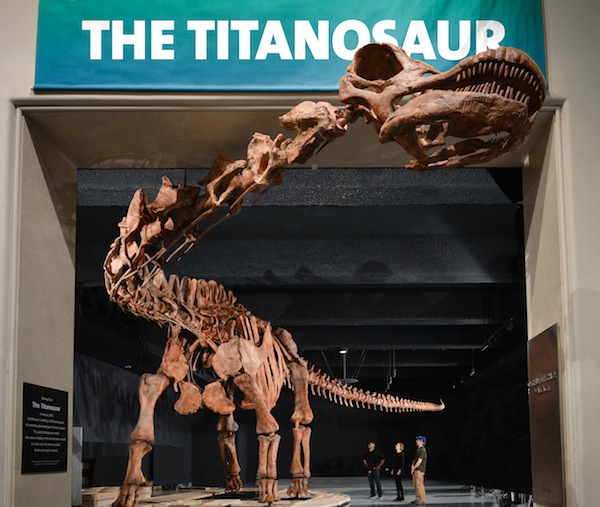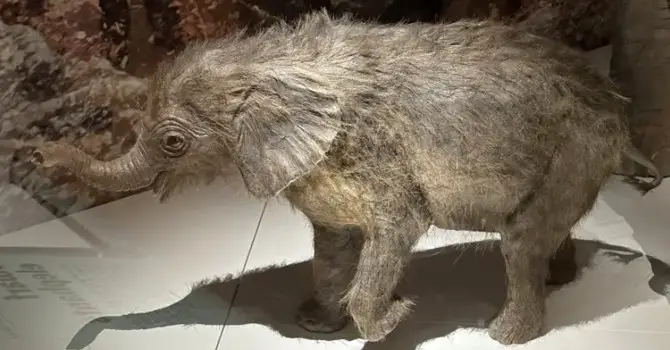As you walk up to see the brand-new Titanosaur (its official name will be revealed in the near future) now debuting at the American Museum of Natural History, you’ll feel a slight crick in your neck, as well as awe. The 122-foot-long cast of a sauropod (plant eater, sex undetermined), with a 39-foot neck, not only spans the length of an entire gallery, its head pops outside of the entrance, greeting you. In fact, it dwarfs the museum's iconic blue whale by about 30 feet in length.
Photo: AMNH/D. Finnin
Weighing in at roughly 70 tons, the exciting discovery was made in 2014 by paleontologists José Luis Carballido and Diego Pol in Patagonia, Argentina, following a tip by a rancher. The findings included an eight-foot femur, or thigh bone, the size of a couch. It took roughly 18 months (seven expeditions, crews of 25 at a time) to complete the excavation and transport the bones back to the museum, explains Pol. In total, 200+ bones were found at the site (more than 70 percent of the skeleton) making this the most complete skeleton of one of the biggest dinosaurs ever found.
The dinosaur's cast was created over six months by Research Casting International in Ontario, Canada, in association with Argentina’s Museo Paleontologico Egidio Feruglio (MEF). Some of the original fossils found will be on display for a year, including the femur and forelimb. There will also be a documentary on the dramatic discovery, Nature: Raising the Dinosaur Great, airing on PBS Feb. 17.
The dinosaur on which the museum's new cast is based was excavated in the desert near La Flecha, 135 miles west of Trelew, Patagonia, by a team from Argentina's Museo Paleontologico Egidio Feruglio. Photo: Dr. Alejandro Otero
About half of the titanosaur discoveries that have been found to date have been made in South America, adds Sol, but most have only been fragmented remains. This is the largest discovery yet.
“It’s a quick-growing, young adult,” says Pol, who works with MEF in Patagonia and received his PhD in a joint program between Columbia University and AMNH. “While we aren’t exactly certain, most sauropods had a life expectancy of about 60 years. This one is about 20 years old, you can tell by the deposit types.” This sauropod may have been isolated from his group and died of stress or hunger 100 million years ago, during the Cretaceous period.
Pol will be making his way back to Patagonia in March. “We have new discoveries getting out, with a carnivorous dinosaur.”
The Titanosaur’s installation is a warm up to a brand new exhibit, Dinosaurs Among Us, opening March 21 at AMNH, that will examine how one group of dinosaurs evolved into birds. For more information, visit amnh.org.







